|
|
General: MOON PHASE: AUGUST 15, 1969 (APOLLO 11) WAXING CRESCENT 200 YEARS NAPOLEON BORN
Elegir otro panel de mensajes |
|
|
Pyramid of Austerlitz
The Pyramid of Austerlitz is a 36-metre-high pyramid of earth, built in 1804 by Napoleon's soldiers on one of the highest points of the Utrecht Hill Ridge, in the municipality of Woudenberg, the Netherlands.[1] Atop the pyramid is a stone obelisk from 1894.
 An 1805 engraving of the Pyramid of Austerlitz by Louis-Pierre Baltard
In 1804, the French General Auguste de Marmont established an army camp (le Camp d'Utrecht) in this central location in the Batavian Republic, the present Netherlands, where over a period of several months he forged together various battalions into a large, well-trained army, capable of beating the British enemy should there be any repetition of the invasion of 1799. In the autumn of 1804, satisfied with the military power of the new army, and to occupy his bored soldiers, Marmont had his soldiers build an earth and turf monument inspired by the Great Pyramid of Giza, which Marmont had seen in 1798 during Napoleon's Egyptian campaign. Even the erosion-exposed stepped surface was imitated. Construction lasted 27 days. The pyramid hill was 36 metres (118 ft) high, and surmounted by a 13-metre (43 ft) wooden obelisk. It was named "Mont Marmont" or "Marmontberg".
In the summer of 1805, Marmont departed with his army to southern Germany to fight in the War of the Third Coalition, which culminated in the Battle of Austerlitz (now Slavkov u Brna), the battle in which Napoleon decisively defeated the Russians and Austrians.
In 1806, despite protests from Marmont, Louis Bonaparte, the new king of Holland, renamed the hill the Pyramid of Austerlitz, and gave the same name to the trading post at the nearby camp of Bois-en-Ville.
After leaving the Netherlands in 1805, Marmont gave the monument and the use of the nearby homestead Henschoten to three soldiers, Louis Faivre, Jean Baptiste La Rouche and Barend Philpsz, who were also to maintain the pyramid. Nevertheless, the wooden obelisk soon deteriorated, and was demolished in 1808. In 1816 the Marmont pyramid and its associated land were sold to the future mayor of Utrecht, Hubert MAJ van Asch van Wijk.
In 1894, Johannes Bernardus de Beaufort, who both owned the Henschoten estate on which the pyramid stood and was mayor of Woudenberg, had the current stone obelisk built on the pyramid. This also began to collapse.
 The Pyramid of Austerlitz in 2002, during its restoration
In view of its 200th anniversary in 2004, the highly dilapidated pyramid was restored between 2001 and 2004. This was done on the initiative of the province of Utrecht, the Den Treek-Henschoten estate and the municipality of Woudenberg, which had previously set up the Austerlitz Pyramid Foundation.
The very dry summer of 2003, followed by heavy rain in 2004, caused further subsidence, and restoration was resumed in 2007. The pyramid was reopened to visitors in 2008, along with a new visitor centre interpreting the period of French rule in the Netherlands. Further piling was carried out in 2010 and 2012 to stabilise the mound.
The Pyramid of Austerlitz is an inspiration for the larger Lion of Waterloo, the pyramid built by King William I as a monument to the Battle of Waterloo where Napoleon was defeated. The mound marks the spot where his son William II was injured.
The Pyramid is a national monument, monument number 39543.
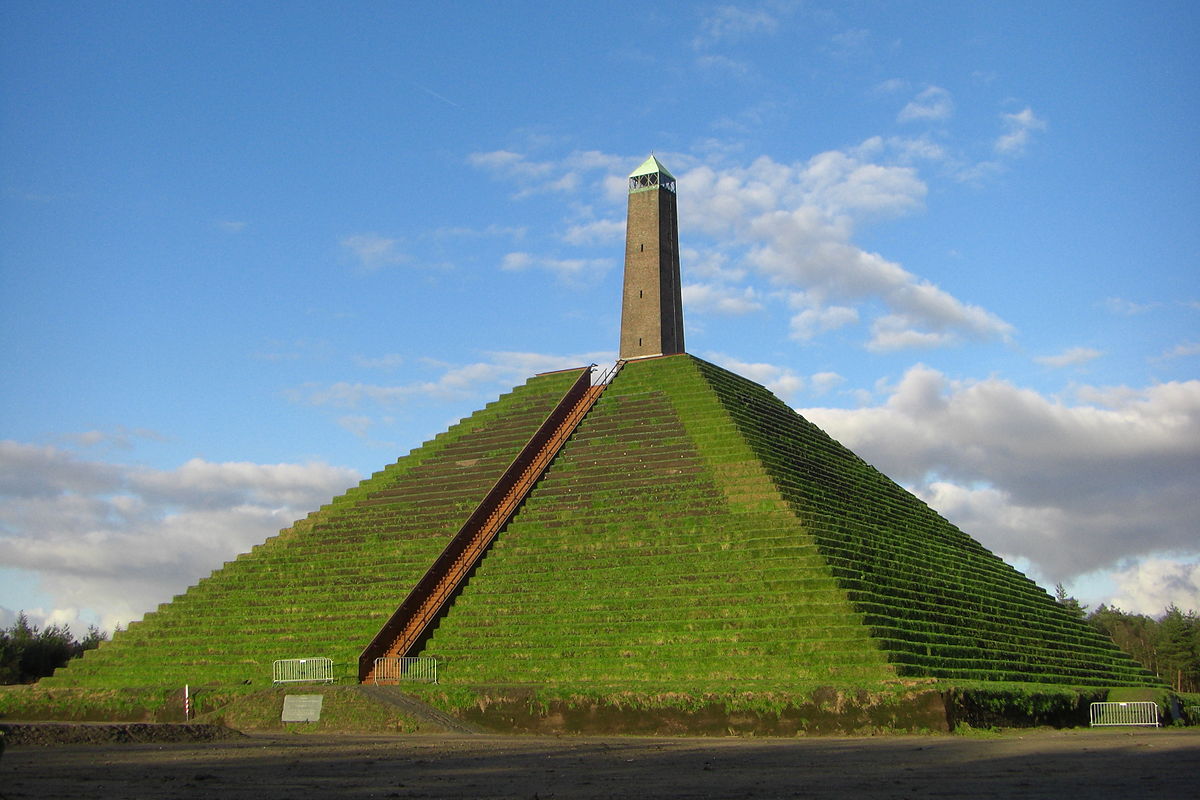 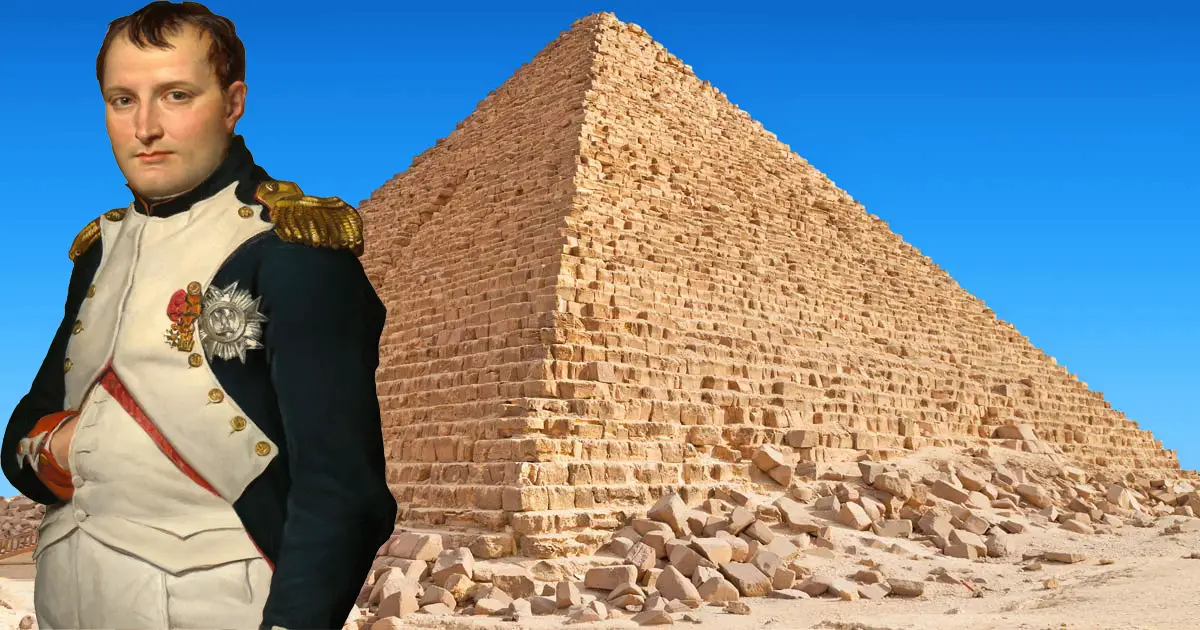   
    
1/3-24/3 =24 DIAS
25/3-17/4=48 DIAS
18/4-11/5=72 DIAS
12/5-4/6 =96 DIAS=24*4
5/6-28/6 =120 DIAS (RADIAN=6.28)=24*5
29/6-22/7= 144 DIAS (DIA DE MARIA MAGDALENA 24X6)=HOLY WEEK/HOLY FRIDAY=24*6 REVELATION 21:17
23/7-15/8=168 DIAS (ASUNCION DE LA VIRGEN=227 GREGORIANO)=24*7
16/8-8/9 =192 DIAS =24*8
9/9-2/10= 216 DIAS =24*9
3/10-26/10=240 DIAS=24*10
27/10-19/11=264 DIAS=24*11
20/11-13/12=288 DIAS=24*12
14/12-6/1=312 DIAS=24*13 REYES MAGOS

 August 13 New Moon 0% |
 August 14 Waxing Crescent 2%
|
August 15
Waxing Crescent
Illumination: 5% |
 August 16 Waxing Crescent 10%
|
 August 17 Waxing Crescent 17%
|
Moon Phase: August 15, 1969
On this day the Moon was in a Waxing Crescent Phase. Best seen in the west after the sun dips below the horizon at sunset. This is the first Phase after the New Moon and is a great time to see the features of the moon's surface. The moon is close to the sun in the sky and mostly dark except for the right edge of the moon which becomes brighter as the days get closer to the next phase which is a First Quarter with a 50% illumination.
Visit the August 1969 Moon Phases Calendar to see all the daily moon phase for this month.
Waxing Crescent Phase
The Waxing Crescent on August 15 has an illumination of 5%. This is the percentage of the Moon illuminated by the Sun. The illumination is constantly changing and can vary up to 10% a day. On August 15 the Moon is 2.11 days old. This refers to how many days it has been since the last New Moon. It takes 29.53 days for the Moon to orbit the Earth and go through the lunar cycle of all 8 Moon phases.

|
|
|
|
|
Batalla de las Pirámides
La batalla de las Pirámides tuvo lugar el 21 de julio de 1798 entre el ejército francés en Egipto bajo las órdenes de Napoleón Bonaparte y las fuerzas locales mamelucas.
En julio de 1798, Napoleón iba dirección El Cairo, después de invadir y capturar Alejandría. En el camino se encontró a dos fuerzas de mamelucos a 15 kilómetros de las pirámides, y a solo 6 de El Cairo. Los mamelucos estaban comandados por Murad Bey e Ibrahim Bey y tenían una poderosa caballería. Los mamelucos, a pesar de ser superiores en número, estaban equipados con una tecnología primitiva, tan solo tenían espadas, arcos y flechas; además, sus fuerzas quedaron divididas por el Nilo, con Murad atrincherado en Embabeh e Ibrahim a campo abierto.
Napoleón se dio cuenta de que la única tropa egipcia de cierto valor era la caballería. Él tenía poca caballería a su cargo y era superado en número por el doble o el triple. Se vio pues forzado a ir a la defensiva, y formó su ejército en cuadrados huecos con artillería, caballería y equipajes en el centro de cada uno, dispersando con fuego de artillería de apoyo el ataque de la caballería mameluca, que intentaba aprovechar los espacios entre los cuadros franceses. Entonces atacó el campamento egipcio de Embebeh, provocando la huida del ejército egipcio.
Tras la batalla, Francia obtuvo El Cairo y el bajo Egipto. Después de oír las noticias de la derrota de su legendaria caballería, el ejército mameluco de El Cairo se dispersó a Siria para reorganizarse. La batalla también puso fin a 700 años de mandato mameluco en Egipto. A pesar de este gran comienzo, la victoria del almirante Horatio Nelson diez días después en la batalla del Nilo acabó con las esperanzas de Bonaparte de conquistar Oriente Medio.
Representaciones culturales
[editar]
La batalla fue representada por François-André Vincent en un boceto, y por varios otros artistas.
|
|
|
|
|
|
|
Walter Scott
| Walter Scott |
 |
| Información personal |
| Apodo |
Border Minstrel  |
| Nacimiento |
15 de agosto de 1771
Edimburgo, Escocia, |
| Fallecimiento |
21 de septiembre de 1832 (61 años)
Abbotsford House, Melrose, Escocia |
| Causa de muerte |
Accidente cerebrovascular  |
| Sepultura |
Abadía de Dryburgh |
| Residencia |
Abbotsford House  |
| Nacionalidad |
Escocia |
| Lengua materna |
Inglés  |
| Familia |
| Padres |
Walter Scott 
Anne Rutherford  |
| Cónyuge |
Charlotte Carpenter (Charpentier) |
| Hijos |
4  |
| Educación |
| Educado en |
|
| Información profesional |
| Ocupación |
novelista, poeta, abogado, Sheriff de Selkirkshire |
| Años activo |
siglo xix |
| Cargos ocupados |
Juez  |
| Movimiento |
Romanticismo |
| Seudónimo |
Jedediah Cleishbotham, Laurence Templeton, Somnambulus, Malachi Malagrowther, Clutterbuck y Lawrence Templeton  |
| Lengua literaria |
inglés |
| Géneros |
Novela histórica, poesía, teatro y Romanticismo  |
| Obras notables |
|
| Miembro de |
|
| Distinciones |
- Baronet
- Miembro de la Sociedad Real de Edimburgo

|
| Firma |
 |
|
|
Walter Scott, primer baronet (Edimburgo, Escocia, 15 de agosto de 1771-Abbotsford House, 21 de septiembre de 1832), fue un escritor británico prolífico del Romanticismo de acción, especializado en novelas históricas, género del que se le puede considerar inventor,1 además de ser poeta y editor. Fue conocido en toda Europa en su época, y, en cierto sentido, fue el primer autor que tuvo una verdadera carrera internacional en su tiempo, con muchos lectores contemporáneos en Europa, Australia y Norteamérica.[cita requerida]
Sus novelas históricas y, en menor medida, su poesía, aún se leen, pero hoy es menos popular de lo que fue en la cumbre de su éxito. A pesar de ello, muchas de sus obras siguen siendo clásicos en la literatura inglesa y específicamente escocesa. Algunos de sus títulos más famosos son Ivanhoe, Rob Roy, The Lady of the Lake, Waverley y The Heart of Midlothian.
Aunque recordado principalmente por sus extensas obras literarias y su compromiso político, Scott fue abogado, juez y administrador legal de profesión, y a lo largo de su carrera combinó su trabajo de redacción y edición con su ocupación diaria como secretario de sesión y alguacil-diputado de Selkirkshire.
Scott, un miembro destacado del establecimiento conservador en Edimburgo, fue miembro activo de la Highland Society, sirvió durante un largo período como presidente de la Royal Society of Edinburgh (1820-1832) y fue vicepresidente de la Society of Antiquaries of Scotland (1827-1829).
Nació en College Wynd, en Edimburgo en 1771; era hijo de un abogado. El joven Walter Scott sobrevivió a un ataque de polio en su infancia que lo dejó cojo de la pierna derecha de por vida. Para restaurar su salud, lo enviaron a vivir durante varios años a la región rural de los Borders (en el sureste de Escocia, fronterizo con Inglaterra) durante siete meses para estabilizar su enfermedad. Allí vivió en la granja de sus abuelos en Sandyknowe. Aprendió el habla de la zona, así como los cuentos y leyendas que caracterizarían gran parte de su trabajo. Su estado de salud motivó también que pasara parte de su infancia en la ciudad balnearia de Bath, en Inglaterra.
Después de estudiar Derecho en la Universidad de Edimburgo, siguió los pasos de su padre y se hizo abogado en Edimburgo. Como empleado de un abogado hizo su primera visita a las Tierras Altas escocesas, para ejecutar un desahucio.
Scott estaba enamorado de Williamina Belsches de Fettercairn, a quien le había propuesto matrimonio varias veces. A pesar de que ella había sido ambigua al contestarle, Scott esperaba que tarde o temprano aceptara. Pero en 1796, Scott se fue a un viaje, y cuando regresó se dio cuenta de que Williamina se estaba enamorando de William Forbes, VII.º baronet de Pitsligo y uno de sus amigos, con quien ella terminaría casándose (más tarde tendrían al científico James David Forbes). Cuando se anunció el compromiso entre Belsches y Forbes, Scott primero se enfadó mucho con ella. Aunque Scott sufrió una decepción amorosa y un sentimiento de dolor que se quedaría en él durante un tiempo, después comprendió que ella no quería hacerle daño.23 Scott seguiría siendo amigo de Forbes, a quien después de morir, aludiría en Marmion,4 y en una carta donde lo describía como un buen amigo.5
|
|
|
|
|
|
|
|
La Crucifixión La Crucifixión con María, Juan, María Magdalena, San Longino y el centurión convertido
(The Crucifixion The Crucifixion with Mary, John, Mary Magdalene, St Longinus and the Converted Centurion)
|
|
|
|
|
|
 August 13 August 13Waxing Gibbous 97% |
 August 14 August 14Waxing Gibbous 99%
|
August 15
Full Moon
Illumination: 100% |
 August 16 August 16Waning Gibbous 99%
|
 August 17 August 17Waning Gibbous 96%
|
Moon Phase: August 15, 2019
On this day the Moon was in a Full Moon phase. The Moon will be visible throughout the night sky rising at sunset in the east and setting with the sunrise the next morning in the west. During a Full Moon the moon is 100% illuminated as seen from Earth and is on the opposite side of the Earth from the Sun. The point at which a Full Moon occurs can be measured down to a fraction of a second. The time it takes between full moons is known as a Synodic month and is 29.530587981 days long. Keep track of all the Full Moons throughout the year on the Full Moon Calendar >
Visit the August 2019 Moon Phases Calendar to see all the daily moon phase for this month.
Full Moon Phase
The Full Moon on August 15 has an illumination of 100%. This is the percentage of the Moon illuminated by the Sun. The illumination is constantly changing and can vary up to 10% a day. On August 15 the Moon is 14.87 days old. This refers to how many days it has been since the last New Moon. It takes 29.53 days for the Moon to orbit the Earth and go through the lunar cycle of all 8 Moon phases.
TODAY'S MOON PHASE 
Phase Details For - August 15
Phase: Full Moon
Illumination: 100%
Moon Age: 14.87 days
Moon Angle: 0.49
Moon Distance: 404,405.93 km
Sun Angle: 0.53
Sun Distance: 151,499,726.47 km
Full Moon Moonrise And Moonset
   
|
|
|
|
|
Lion of Amphipolis
From Wikipedia, the free encyclopedia
 The Lion of Amphipolis  Lion of Amphipolis location
The Lion of Amphipolis (Greek: Λέων της Αμφίπολης) is a 4th-century BC tomb sculpture near Amphipolis, Macedonia, northern Greece. According to Oscar Broneer and archaeologist Dimitris Lazaridis, the first person excavating in the area in the 1960s, it was set up in honour of Laomedon of Mytilene, an important general of Alexander the Great, king of Macedon.
It is now located about 1 km outside the south gate of the ancient city.
The discovery of the monument is connected to the modern history of Greek Macedonia, as the first parts of it were found initially by Greek soldiers during the First Balkan War in 1912–13 when they drained the Strymonas river bed (where the stone from the Lion’s plinth had been used in a dam in or after the Roman period) to build the modern bridge.[1] They were followed by British soldiers a few years later in 1916, during World War I, who also discovered significant parts of the monument while building fortifications at the bridge. The British tried to steal (evidence required) the pieces, but a Bulgarian attack prevented their plans.
In the early 1930s, during works for draining part of Lake Kerkini nearby, there was a discovery of an ancient bridge and close to it in the river mud further, very large pieces of the marble lion. In 1937, and thanks to Lincoln MacVeagh, the US ambassador in Greece at the time, there was a private initiative along with support and funds from the Greek government to restore the Lion of Amphipolis, which eventually came to be in its current form. The whole process has been documented thoroughly by Oscar Broneer in his book The Lion of Amphipolis published in 1941.
Although in seated position, the lion is larger and bulkier than the one erected at Chaeronea and has a height of more than 4 m in its main body. Taking into account the base, it is taller than 8 m. The head has a width of 2 m. Its craftsmanship shows a work of the 5th or first half of 4th century BC. As to when it was erected, there is no agreement between experts as there is no mention of it in ancient sources.
|
|
|
|
|
Tellingly the LHC suns are aligned with the (original/#1) Earth's equinoctial axis.

So the context is right and the stage is set…
Are our 3 Suns a perfect replica of Orion's Belt, and through which the Giza pyramids? One way to find out:

They, are, in fact, identical!
The LHC is… an "Orion Stargate".
Apollo
Mankind set foot on the Moon for the first time on July 20th, 1969 as NASA's Apollo 11 mission successfully landed in the Sea of Tranquility, allowing the first astronaut Neil Armstrong to take his "one small step for (a) man, giant leap for mankind".

The Moon has been shown to be a major component of the LHC secret design and here it is confirmed further by the fact that the Apollo program also intelligently interacts with the LHC…
- The Apollo Earth-Moon connection echoes the LHC-SPS relationship (= Earth-Moon ratio)
- CERN/LHC is partially situated in the French town Saint-Genus-Pouilly; the name "Pouilly" apparently comes from the Latin "Appolliacum"; in Roman times there was a temple dedicated to Apollo in the area (link 1, link 2)
- "Apollo" is also said to mean "to destroy" or "the destroyer" (= Apollyon) and right at CERN/LHC infamously stands a statue of Shiva, a Hindu deity known as "the Destroyer"
Now let's take a look at the Apollo program insignia…

- The Orion constellation is centrally depicted in the middle of the insignia, resonating with the LHC "Orion stargate" code
- Orion represents Osiris the god of the underworld; the name "Apollo" is associated with a "bottomless pit" (underworld) via Apollyon/Abaddon in the Book of Revelation 9:11
Revelation 9:11 And they had a king over them, which is the angel of the bottomless pit, whose name in the Hebrew tongue is Abaddon, but in the Greek tongue hath his name Apollyon.
After finding this many correlations, our next logical step is to check for any visual overlay interaction between the Apollo program insignia, which is circular, and the LHC/solar system/Orion Belt Stars diagram we've been working with.
For starters, here is a straightforward overlay arrangement:

Not much happening… except the Moon and the SPS actually appear identical in size. We can check this by putting the two together…

As you can see, they are the exact same size. The SPS representing the Moon matching the size of the Moon… making perfect sense.
But why did we have to move the Apollo insignia for this? It's curious and seems a bit clumsy because the rearrangement didn't result in any other additional alignments. We need to investigate this a little further…
Keeping the Moon snugly inside the SPS, let us now rotate the insignia 180 degrees, i.e. we turn it upside down, like this:
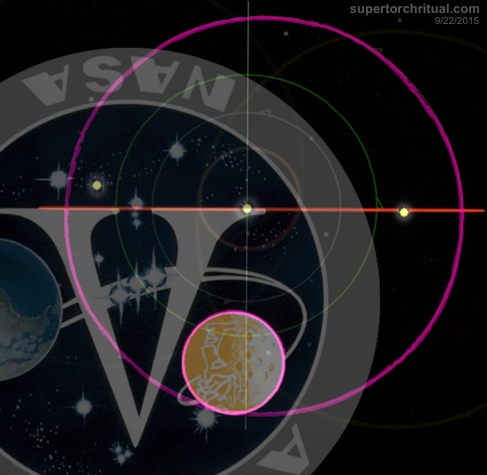
There it is, an unmistakable alignment! The flat feet of the big letter "A" now rest precisely on the solar system's equinoctial axis (red)!
At this point we have little reason to doubt we are dealing with a real hidden design here and not some happy coincidence. The following further confirms the reality of what we are uncovering…
Apollo 11 had its own insignia…

Let's bring together the two insignias (they are sized so that the inner edges of the circles match perfectly):
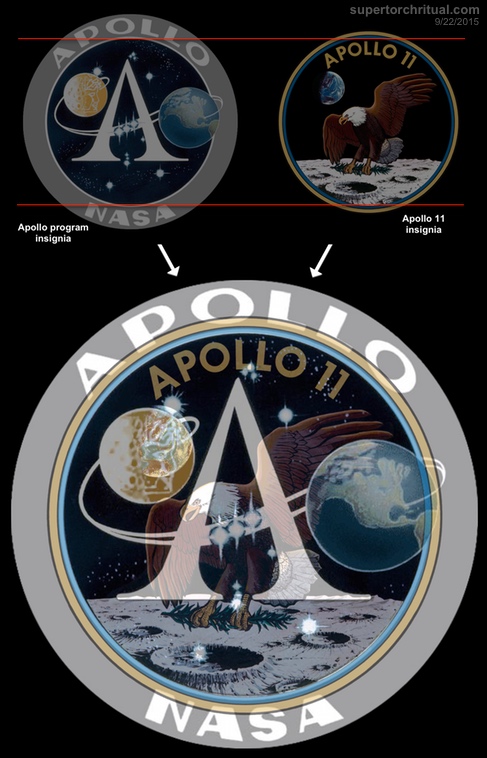
It's unmistakable: The same letter "A" stands tall like a pyramid right on the surface of the Moon!
The "pyramid" allusion here is no accident either.
There is this…
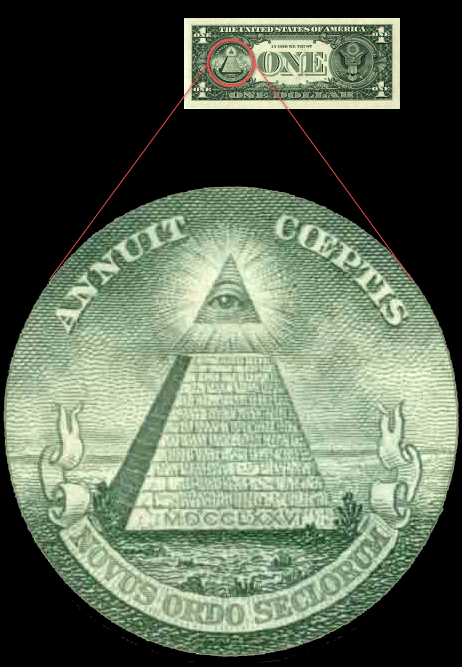
 
And there is also the Orion Correlation Theory: The Apollo insignia displays Orion and the Correlation Theory identifies Orion with the pyramids.

The Orion Correlation Theory emerged in the 1990s. The Apollo program was active back in the 1960s…
Somebody knew back then.
Both the Apollo program and CERN's LHC were enormous undertakings carried out by mankind to boldly go where no man has gone before. And we now see that they mysteriously interact with each other, whispering "Orion Stargate".
In Closing
So there you have it. I am confident I have provided enough compelling evidence to establish that CERN's Large Hadron Collider has a secret side that appears to be fully celestial in nature, ultimately pointing its ethereal finger to the Moon and Orion, as well as Mars.
Is the LHC a "Gate of the God", a "Tower of Babel", symbolically or literally connecting "heaven and earth"? Is it an "Orion Stargate" blueprint that can, if sufficiently decode, help us become a more inter-dimensional civilization?
And just who is behind the LHC secret design?
I don't have all the answers. It's all still very mysterious. The new revelations in this article, however, should serve as a major breakthrough paving the way for further investigation that will leads us to more stunning discoveries and more concrete answers to the big questions.
As always, if you are intrigued and would like to keep up with the latest, cutting-edge multicontextual discoveries (remember, a lot of the findings in this article are from my investigation all the way back in 2008-2010), consider joining STRUG (Super Torch Ritual Underground, our subscriber section), where information moves faster than the speed of light. Please also help us out by spreading the word. (If this article is met with silence, I might stop posting major public/free/Etemenanki articles.)
https://www.supertorchritual.com/underground/articles/CERN_Orion_Stargate.html |
|
|
|
|
La Madeleine
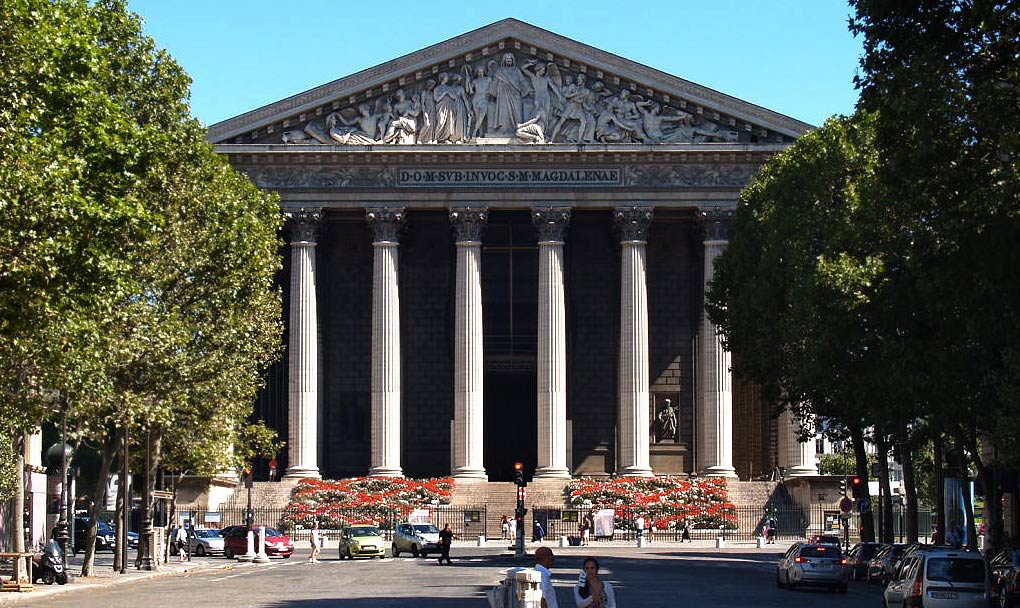
Foto: joz
Para ser una iglesia, la Madeleine tiene sin duda una forma extraña, pues parece más bien un templo de la antigua Roma. La explicación hay que buscarla en la turbulenta historia de París en los años que rodean a la Revolución Francesa.
Historia del monumento
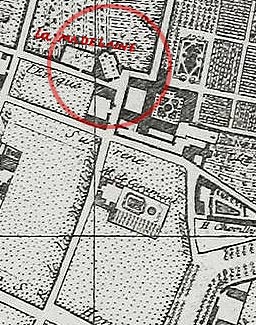
La antigua Madeleine
Antes de que esta zona de la ciudad quedara completamente alterada con la construcción de la enorme Plaza de la Concordia, existía en este lugar una pequeña iglesia de la Madeleine. Pero el diseño de la nueva plaza exigía una iglesia más grande, cerrando la perspectiva de la "Calle Real", que conducía hasta ella.
Cuando estalló la Revolución Francesa, la iglesia se encontraba todavía a medio construir, e inmediatamente se detuvieron las obras.
Pasado el periodo revolucionario, Napoleón quiso convertir la iglesia inacabada en un templo pagano, dedicado a la gloria del Gran Ejército, la Grande Armée. Para ello, derribó todo lo construido hasta entonces, y comenzó a levantarse el edificio que hoy contemplamos.
Pero finalmente, viendo que su efímero Imperio se derrumbaba, decidió que el edificio, ya muy avanzado, volviera a su uso original como iglesia.
Exterior del monumento
La Madeleine tiene la forma de un templo "periptero", es decir, rodeado de columnas por sus cuatro costados, como los templos griegos. Y posee las mismas dimensiones que el mayor templo de la antigua Grecia: el de Zeus Olímpico de Atenas.
Los elementos más destacados en el exterior de La Madeleine son:
1. El frontón
Fue construido después de la Restauración borbónica, en tiempos de Luis Felipe de Orleans, el "rey ciudadano". Aunque Luis Felipe había sido partidario de la Revolución, quiso que la imagen de este gran frontón tuviera un espíritu de conciliación. Por eso permitió que apareciera en él María Magdalena arrodillada ante Jesucristo Juez, como una alegoría de la Francia arrepentida, que suplica perdón por la ejecución de Luis XVI.
En efecto, a pocos pasos de esta iglesia, en la Plaza de la Concordia, había tenido lugar, el 21 de enero de 1792, la muerte del rey en la guillotina.
2. Puertas de bronce
Las puertas de entrada al templo son uno de los elementos más impresionantes de esta iglesia, por sus colosales dimensiones y por la fuerza de sus relieves.
Fueron realizadas por el barón Henri de Triqueti y representan "Los diez mandamientos". Los dos primeros se encuentran en el panel horizontal de la parte superior, y los otros 8 en las hojas de las puertas.
Estos son los mandamientos, y las escenas que los representan. Todas ellas están tomadas del Antiguo Testamento y tienen gran fuerza expresiva.
- "No tendrás otros dioses fuera de mí". Escena que lo ilustra: el pueblo judío recibe las tablas de la Ley.
- "No invocarás en vano el nombre de Dios". El pueblo judío ante Moisés.
- "Santificarás las fiestas". Dios descansa el séptimo día.
- "Honra a tu padre y a tu madre". Noé maldice al hizo que se burló de él.
- "No matarás". Caín es castigado por la muerte de su hermano.
- "No cometerás adulterio". El profeta Natán recrimina al rey David.
- "No robarás". Josué dictando sentencia por un robo.
- "No levantarás falso testimonio". Daniel defiende a la casta Susana ante la acusación injusta.
- "No codiciarás la mujer de tu prójimo". Dios rescata a Sara, la mujer de Abraham.
- "No codiciarás la casa de tu prójimo". Elías recrimina al rey Acab por codiciar la viña de Nabot, y darle muerte.
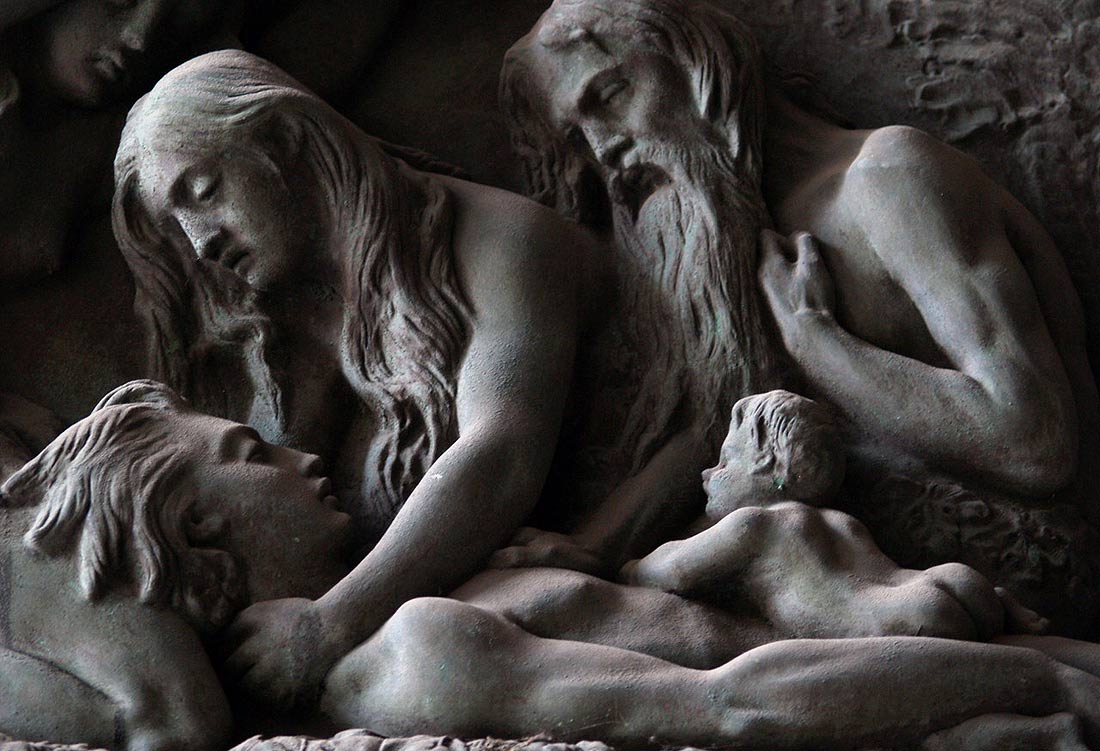
Detalle del 5º mandamiento. Abel yace en tierra tras ser asesinado por Caín. Foto: joz
Visita al interior
Si el exterior de La Madeleine parece un templo pagano de la Antigüedad, el interior se organiza como unas termas, con gran profusión de mármoles de colores.
Su mayor defecto es la escasa luz natural, que deja a la iglesia habitualmente en semipenumbra.
El techo se cierra mediante bóvedas rebajadas, adornadas con casetones y con un gran óculo en el centro, inspiradas en el Panteón de Roma.
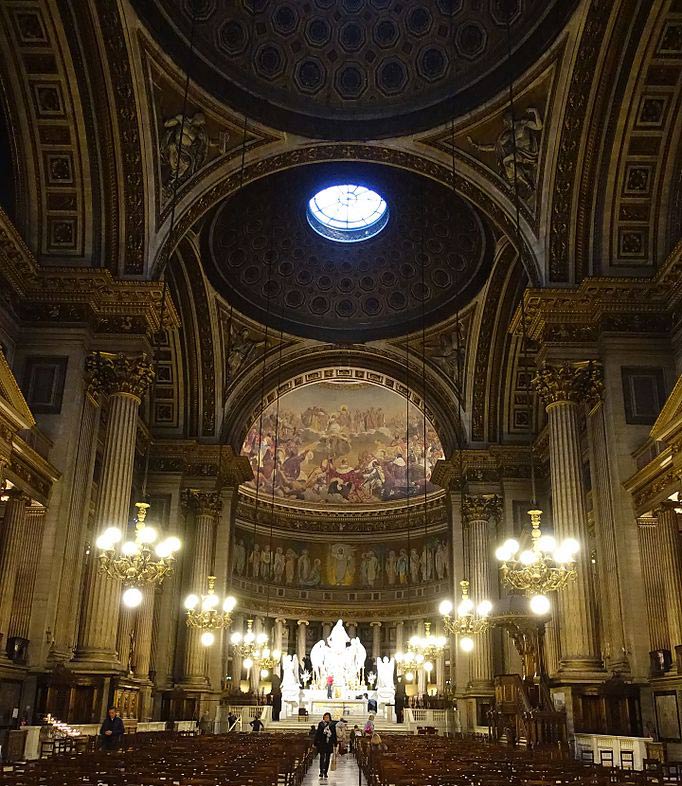
Foto: Guilhem Vellut (recorte)
La iglesia está llena de esculturas realizadas por artistas que fueron los mejores en su momento. El gobierno de Luis Felipe de Orleans puso gran cuidado la decoración de esta iglesia, que debía ser "El Remplo de la Reconciliación nacional", tras las convulsiones de la Revolución Francesa y del Imperio. Por eso destinó a La Madeleine grandes cantidades de recursos.
Las piezas más vistosas son:
- El gran grupo escultórico sobre el altar principal, obra de Charles Marochetti. Se llama "El arrebato de María Magdalena", a la que muestra en éxtasis, en el momento de ser arrebatada al cielo, transportada en una canastilla por ángeles de enormes alas.
-
El enorme fresco de Jules-Claude Ziegler, en el casquete del ábside. En él aparecen representados personajes de la Iglesia, de todas las épocas y culturas. La escena central representa a Cristo, que acoge y perdona a María Magdalena (alegoría de Francia arrepentida, como en el relieve del frontón).
Una banda a los pies de la santa explica el motivo: dilexit multum, amó mucho.
En el fresco aparece también la figura de Napoleón Bonaparte, que en ese momento acababa de fallecer y era extraordinariamente popular en Francia. Clica en la imagen para verlo.
LINKS ÚTILES
https://www.guiapracticaparis.com/la-madeleine.php |
|
|
|
|
|
 Primer Primer
 Anterior
28 a 42 de 42
Siguiente Anterior
28 a 42 de 42
Siguiente
 Último
Último

|
|
| |
|
|
©2025 - Gabitos - Todos los derechos reservados | |
|
|

